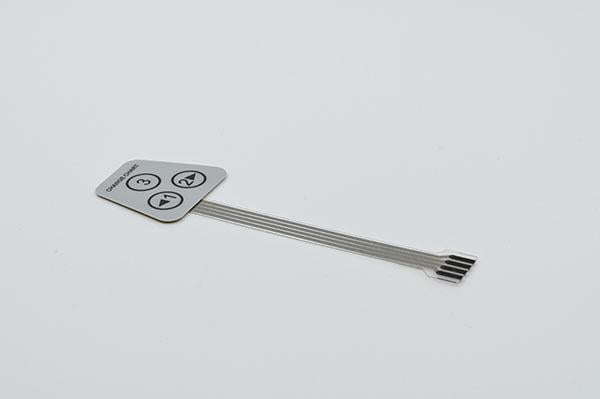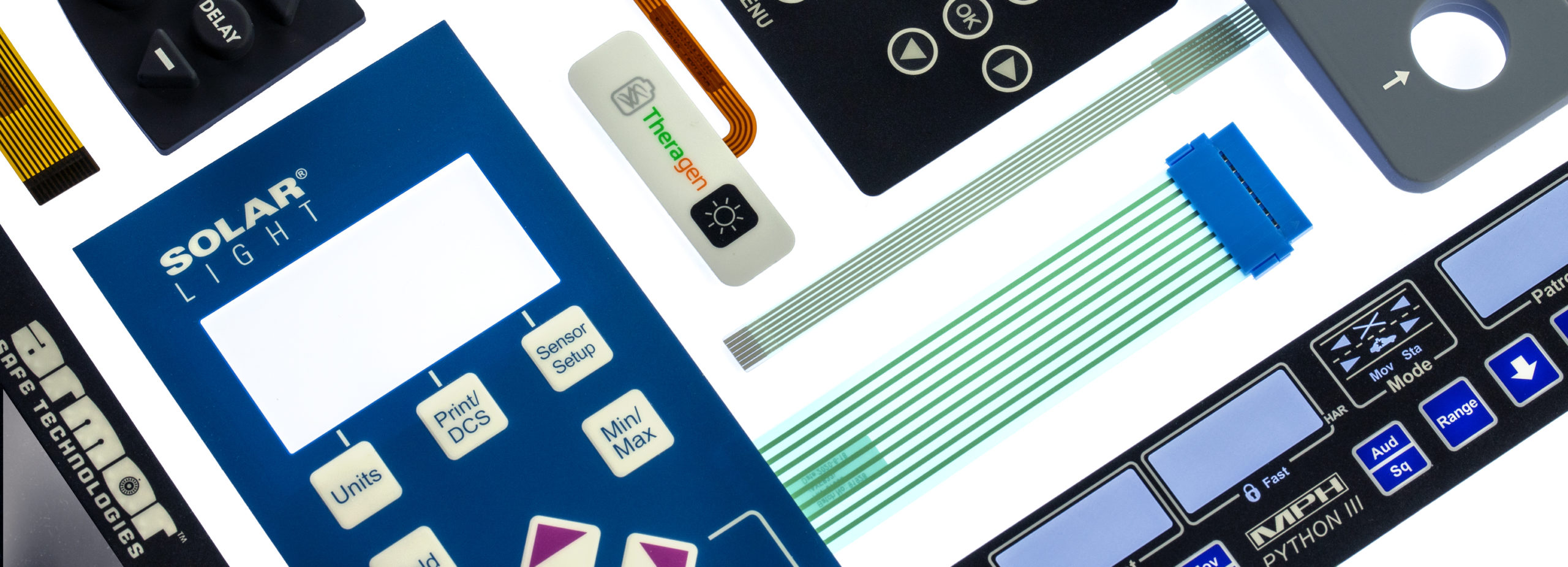You’ll experience the difference when collaborating with a premium membrane switch manufacturer.
You’ll experience the difference when collaborating with a premium membrane switch manufacturer.
Blog Article
All About Membrane Change: Recognizing Its Style and Capability
When you believe regarding the control user interfaces in modern devices, membrane layer switches usually come to mind. Allow's discover what collections membrane layer changes apart from various other control systems.
What Are Membrane Switches?

Their seamless nature makes them simple to tidy and resistant to dirt and moisture, a vital feature in many settings. Membrane layer buttons can additionally be tailored concerning shape, size, and graphics, permitting manufacturers to create distinct user interfaces tailored to details items. And also, they're lightweight and slim, which helps in minimizing the total mass of tools. In general, membrane layer buttons play a substantial role in boosting customer experience throughout a large range of applications.
Just How Membrane Layer Changes Work
When you press a key on a membrane layer button, it turns on a straightforward yet efficient system. membrane switch manufacturer. The top layer, often made of flexible material, presses down onto a conductive layer underneath it.
You'll discover that the responsive feedback varies based upon the button design, supplying either a soft click or a more noticable response. When you launch the trick, the membrane returns to its initial setting, reopening the circuit and stopping the signal. This procedure occurs virtually instantaneously, making certain a receptive customer experience.
Membrane layer buttons are popular due to their durability and resistance to dust and wetness, making them suitable for various applications, from family devices to medical gadgets. Recognizing this procedure aids you value their widespread use.
Trick Parts of Membrane Layer Buttons
Comprehending the key elements of membrane buttons is essential for understanding their performance and design. The protective layer guards versus ecological variables and wear, prolonging the button's life expectancy. By understanding these parts, you'll gain understanding into just how membrane layer switches over operate and their importance in different applications.
Products Used in Membrane Switch Over Style
The efficiency and resilience of membrane layer switches greatly rely on the materials utilized in their style. You normally come across polyester and polycarbonate as primary substrates as a result of their outstanding toughness and versatility. These materials stand up to scrapes and chemicals, making them ideal for demanding atmospheres.
The conductive layers often make use of silver or carbon, selected for their dependability and conductivity. membrane switch manufacturer. Silver gives superior performance, while carbon is a cost-efficient alternative. For the overlay, you may think about a matte or glossy finish, depending on your visual demands and customer experience
Adhesives play a necessary function as well; they bond layers firmly and ensure longevity. Make sure to choose adhesives that hold up against environmental variables like temperature and moisture. Lastly, don't ignore the relevance of a great printing strategy for graphics, as it enhances both functionality and visual allure. Selecting the best materials will guarantee your membrane switch stands the test of time.
Style Considerations for Membrane Layer Buttons
While creating membrane layer buttons, it's important to think about various factors that affect their capability and user experience. Start by concentrating on the design and button size; make specific they're user-friendly and easy to navigate. Consider the responsive feedback you wish to provide-- will customers require an obvious click or a softer touch? Additionally, think of the products you'll utilize, as they'll impact sturdiness and appearances.
Confirm your style accommodates environmental factors, like moisture or temperature level variants, which could impact efficiency. By carefully taking into consideration these elements, you'll produce a membrane layer switch that improves use and fulfillment.
Applications of Membrane Layer Switches
Membrane layer buttons are functional components located in numerous applications, from commercial devices to consumer electronics. You'll see their effect in makers that need sturdy user interfaces and in tools that profit from smooth designs. Understanding these applications helps you value the performance and practicality of membrane switches in day-to-day modern technology.
Industrial Devices Usage
When you're looking to enhance the functionality of commercial equipment, membrane buttons offer a dependable service that combines durability with user-friendly layout. These switches are excellent for rough atmospheres, supplying resistance to dust, wetness, and chemicals. You'll locate them in control panels for producing machines, cooling and heating systems, and clinical devices, where accuracy and responsiveness are vital. Their low account means they fit effortlessly right into different devices, conserving important area while keeping ease of usage. With adjustable graphics and backlighting options, you can develop an user-friendly user interface for drivers, improving performance and safety. Plus, their lengthy life expectancy decreases maintenance prices, making them a wise investment for your industrial applications. Embrace membrane layer buttons to streamline your operations and enhance overall efficiency.
Consumer Electronics Assimilation
In the domain name of customer electronic devices, membrane switches play a vital function in improving individual communication and device capability. You'll locate them in gadgets like microwaves, push-button controls, and video gaming consoles, supplying a seamless method to interact with technology. view Their sleek layout permits simple assimilation right into numerous items, making controls instinctive and user-friendly. With their capacity to include graphics and backlighting, you can take pleasure in a modern-day visual that enhances the gadget's general look. Membrane buttons additionally assure longevity and resistance to dust and moisture, extending the lifespan of your electronic devices. By selecting membrane layer switches, you boost not just the capability but also the design of your devices, making daily interactions smooth and delightful.
Advantages and Disadvantages of Membrane Buttons
While membrane switches offer a variety of benefits, they likewise include some drawbacks that you should take into consideration. One significant benefit is their compact style, making them ideal for space-constrained applications. They're likewise cost-efficient, providing a sturdy remedy with a low manufacturing price. Furthermore, their seamless surface is easy to clean, boosting hygiene in environments like health centers.

Membrane layer buttons can have a much shorter life expectancy compared to mechanical switches, particularly under hefty use. They can also be less responsive, which may influence user feedback during operation. Stabilizing these pros and cons will assist you establish if membrane buttons are the right fit for your job.
Regularly Asked Inquiries
The Length Of Time Do Membrane Switches Typically Last?
Membrane layer switches over commonly last in between 5 to ten years, relying on use and ecological problems. You'll desire to evaluate factors like wear, direct exposure to moisture, and temperature changes to evaluate their long life efficiently.
Can Membrane Layer Changes Be Personalized for Specific Styles?
Yes, you can tailor membrane buttons to fit specific designs (membrane switch manufacturer). You'll have the liberty to pick shades, forms, and designs that my latest blog post match your job's requirements, guaranteeing they blend perfectly with your total aesthetic
What Is the Price Variety for Membrane Layer Switch Over Production?
The price array for membrane button production usually drops in between $1 and $10 each, relying find out on variables like design complexity, amount, and materials. You can get quotes from suppliers to locate the very best alternative.

Are Membrane Changes Water-proof or Immune?
Membrane switches can be made to be waterproof or immune, relying on materials used and construction methods. If you need them for damp settings, guarantee you define those demands during the layout procedure.
Just How Do Membrane Changes Contrast to Traditional Switches?
Membrane layer buttons are typically thinner and more adaptable than traditional buttons, using a streamlined design. They're typically easier to clean up and incorporate, however may not supply the tactile feedback you're utilized to with mechanical alternatives.
Conclusion

Report this page